THE HOUSE AT UJAZDOWSKIE 16
THE MODERN JEWISH EXPERIENCE
Deborah Dash Moore and Marsha L. Rozenblit, editors Paula Hyman, founding coeditor
THE HOUSE AT UJAZDOWSKIE 16
JEWISH FAMILIES IN WARSAW AFTER THE HOLOCAUST
KAREN AUERBACH
This book was made possible in part by support from the Schwartz Fund.
This book is a publication of
Indiana University Press
Office of Scholarly Publishing
Herman B Wells Library 350
1320 East 10th Street
Bloomington, Indiana 47405 USA
iupress.indiana.edu
Telephone orders 800-842-6796
Fax orders 812-855-7931
2013 by Karen Auerbach
All rights reserved
No part of this book may be reproduced or utilized in any form or by any means, electronic or mechanical, including photocopying and recording, or by any information storage and retrieval system, without permission in writing from the publisher. The Association of American University Presses Resolution on Permissions constitutes the only exception to this prohibition.

The paper used in this publication meets the minimum requirements of the American National Standard for Information
Sciences-Permanence of Paper for Printed
Library Materials, ANSI Z39.48-1992.
Manufactured in the United States of America
Library of Congress Cataloging-in-Publication Data
Auerbach, Karen, author.
The house at Ujazdowskie 16 : Jewish families in Warsaw after the Holocaust / Karen Auerbach.
pages cm. (The modern Jewish experience)
Includes bibliographical references and index.
ISBN 978-0-253-00907-4 (cl : alk. paper) ISBN 978-0-253-00915-9 (eb) 1. JewsPolandWarsawBiography. 2. JewsPolandWarsawSocial conditions20th century. 3. JewsPolandWarsawSocial conditions21st century. 4. JewsPolandWarsawSocial life and customs. 5. JewsHomes and hauntsPolandWarsawHistory. 6. Warsaw (Poland)Buildings, structures, etc.History. I. Title.
DS134.7.A57 2013
940.5318140943841dc23
2013003910
1 2 2 3 4 5 18 17 16 15 14 13
FOR MY MOTHER ,
Marsha Moses Auerbach,
In loving memory
Oh, gateways of Warsaw!
Are there not apartment houses with gateways outside of Warsaw? There are. Perhaps they exist everywhere, yet only in Warsaw does the gateway of a home define somehow the life of several generations.
Oh, gateways of Warsaw! Whatever can I dedicate to you now, I, a chronicler searching for barely perceptible shadows? A handful of chaotic memories. I know only that in your chilly semidarkness, among your strange and extravagant ornamental molding and pseudo-Renaissance cornices, we discovered our Dzikie Pola, we, boys from the floors, our first bruises and our first bloody noses. And as with everything in this strange city, you, too, gateways of Warsaw, appeared in downright strangeness and misery in the noblest heroism without posing, pomposity or lofty words, rather with a lightly vulgar scream, just as it is done in Warsaw.
LEOPOLD TYRMAND, ZY
Dzikie Pola: Wild fields, referring to the eastern steppes of the Polish-Lithuanian Commonwealth. The term here also refers to a childrens role-playing game that is acted out in the terms historical context. Tyrmand, born in 1920, was from a prewar Polonized Jewish family in Warsaw. He was a journalist in postwar Poland before he emigrated in 1965 and settled in the United States.
CONTENTS
ACKNOWLEDGMENTS
This project has benefited from the assistance and generosity of many individuals. I would like first of all to express my gratitude to Antony Polonsky, whose guidance and wealth of knowledge as my doctoral advisor at Brandeis University influenced every aspect of this book. David Cesarani, ChaeRan Freeze, Seamus OHanlon, Jonathan Plaut, Jonathan Sarna, and Eugene Sheppard provided feedback on all or parts of the manuscript. The steadfast support of Marc Brettler and Ellie Kellman helped make it possible to see this project through to completion, and Michael Steinlaufs work on postwar Poland pointed me toward doctoral studies. Israel Bartal and Gabriella Safran commented on sections of the dissertation on which this book is based as part of the International Forum of Young Scholars on East European Jewry, as did David Biale, Laura Levitt, and other participants in the Posen Summer Seminar on Approaches to Jewish Secularism. Sylvia Fuks Fried was always willing to offer helpful advice. Deborah Dash Moores comments significantly improved this book, and she facilitated its publication as coeditor of Indiana University Presss Modern Jewish Experience series. I am indebted as well to the late Paula Hyman, who was the series coeditor, and to its current coeditor, Marsha Rozenblit, for their comments. This book would not have been possible without the support of Janet Rabinowitch at Indiana University Press, where Peter Froehlich and Nancy Lightfoot also shepherded me through the publishing process and freelancer Carol Kennedy copyedited the manuscript.
I pursued this project in several wonderfully supportive environments. I benefited from the insights of colleagues at the University of Southampton in England and the religious studies faculty at Virginia Tech, and I completed the final stages of writing at Monash University in Melbourne, Australia, where new colleagues in the European history research support group gave thoughtful feedback, and where the Australian Centre for Jewish Civilisation provided me with a home on the other side of the world. Conny Aust, Michael Cohen, Adam Mendelsohn, Simon Rabinovitch, Monika Rice, David Slucki, Melissa Weininger, and Kalman Weiser have helped to form a collegial circle in Jewish studies. I am especially grateful to the Frankel Institute for Advanced Judaic Studies at the University of Michigan, where a postdoctoral fellowship in 20102011 gave me the needed time to write this book, and to the American Council of Learned Societies, the American Society for Jewish Heritage in Poland, the Kociuszko Foundation, the YIVO Institute for Jewish Research, the Tauber Institute for the Study of European Jewry, and the Department of Near Eastern and Judaic Studies at Brandeis University for grants and fellowships that funded my research and training.
Previous versions of portions of chapter 4 of this book appeared in Nusekh Poyln? Communism, Publishing, and Paths to Polishness among the Jewish Parents of 16 Ujazdowskie Avenue, Polin: Studies in Polish Jewry 24: 275297, 2012. Previous versions of portions of chapter 6 and the epilogue appeared in Elders Transmit Holocaust Memory in Vivid Detail to Younger Interviewers: In Warsaw, Ghetto Buildings Are a Palimpsest of the Past, Forward [New York, N.Y.], April 16, 1999, 15; Youngsters Rebuild Life in Poland, Then Decamp for Israel, America: A Revival Turns Complicated in a Haunted Land, Forward [New York, N.Y.], December 18, 1998, 1; and Natan Cywiak, 81, Was Stalwart of Warsaw Synagogue, Forward [New York, N.Y.], May 28, 1999, 6.
I am deeply indebted to my interviewees, who were generous with their time as they helped to reconstruct their family histories. This work would not have been possible without the assistance of the children of Ujazdowskie 16 and their relatives: Marian Adler, Halina Adler-Bramley, Lena Bergman, Feliks Falk, Krystyna Heldwein, Bernard Krutz, Jurek Neftalin, Wodek Paszyski, Szymon Rudnicki, Jan and Franek Sawny, Piotr Sztuczyski, Liliana Tyszelman, and the late Zofia Zarbska. I am particularly grateful to Marian Adler and Halina Adler-Bramley for allowing me access to their parents personal papers.

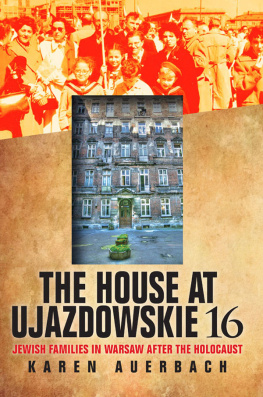




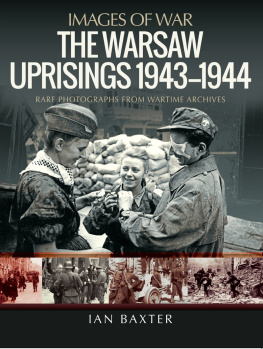

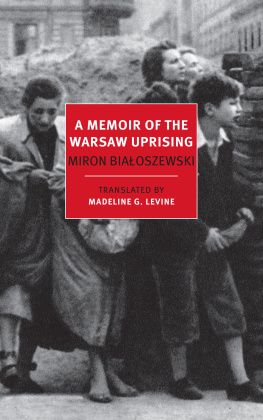
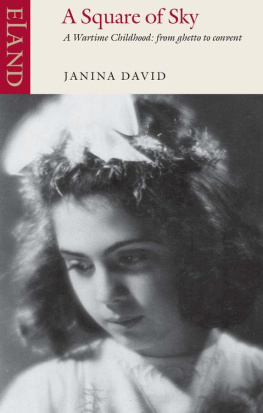
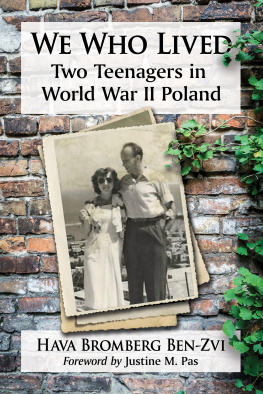


 The paper used in this publication meets the minimum requirements of the American National Standard for Information
The paper used in this publication meets the minimum requirements of the American National Standard for Information